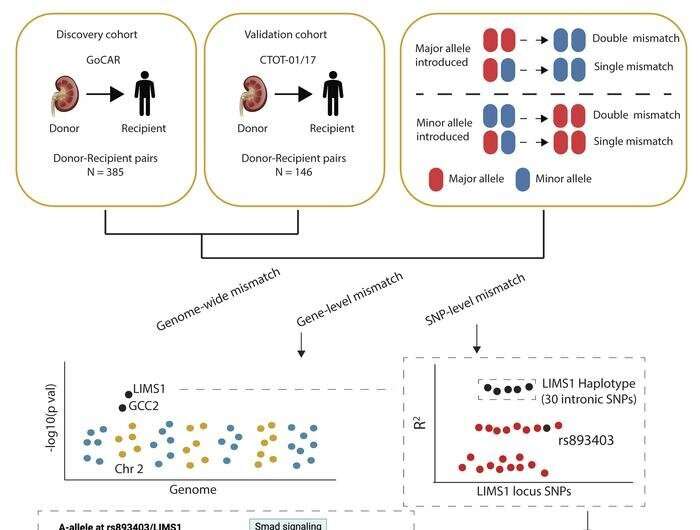This article has been reviewed according to Science X's editorial process and policies. Editors have highlighted the following attributes while ensuring the content's credibility:
fact-checked
peer-reviewed publication
trusted source
proofread
Studying mismatches between donor and recipient in kidney transplantation

A recent study found new ways to identify mismatches between donors and recipients in kidney transplantation.
Humans—along with all mammals—have evolved over millennia to differentiate between self and non-self cells and tissues, explains Madhav Menon, MD, associate professor of medicine (nephrology) and director of research in kidney transplantation, who is corresponding author of the study. "This is great for fighting infection but also causes the body to mount an immune response and reject a transplanted kidney that it recognizes as foreign," he said.
The best scenario for successful transplantation is receiving an organ from an identical twin, Menon added. "If the donor is a non-identical twin or a sibling, the kidney will still be rejected because the body recognizes even the smallest differences," he said.
Over the years, researchers have recognized that the human leukocyte antigen (HLA) region, located on chromosome six of the human genome, plays a key role in determining if the kidney donor and patient match. If the HLA region between donor and recipient is similar, chances of the transplant being successful improve.
However, there is still rejection in cases where there is an HLA match, Menon said, which led him to question if there are other genes in the remaining part of the genome that also need to be matched between donors and recipients to contribute to graft survival.

In the study, Menon and his team tested mismatches in 20,000 genes in the genome, independent of HLA, using approximately 600 transplants to find associations with kidney graft loss. The researchers discovered that a mismatch in the gene LIMS1 was connected to increased risk of losing the transplanted kidney.
"Mutations in this gene, which are common in the U.S. population, are connected to higher or lower amounts of a neighboring gene and its protein, GCC2," Menon explained. "In the case of a mismatch, this can trigger fibrosis in the graft itself and immune responses in the recipient."
These findings were published in the Journal of Clinical Investigation.
The study will have strong implications for the transplant community, impacting risk stratification, monitoring of transplant patients, and potential treatments, according to Menon.
"Once we have an in-depth understanding of the mechanism behind this LIMS1 mismatch, we can develop targeted therapeutics specifically in cases where there are donor-recipient differences in these genes," he said.
More information: Zeguo Sun et al, Multiscale genetic architecture of donor-recipient differences reveals intronic LIMS1 mismatches associated with kidney transplant survival, Journal of Clinical Investigation (2023). DOI: 10.1172/JCI170420



















